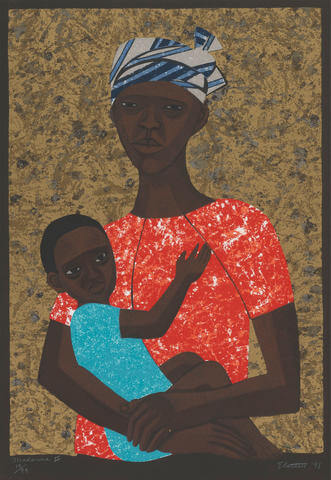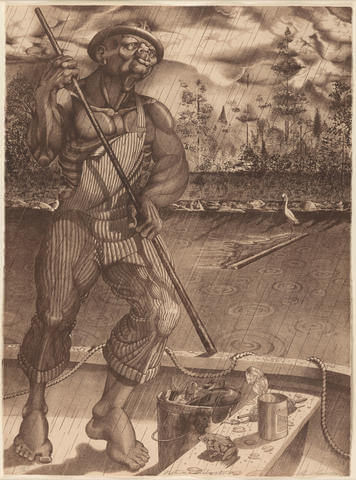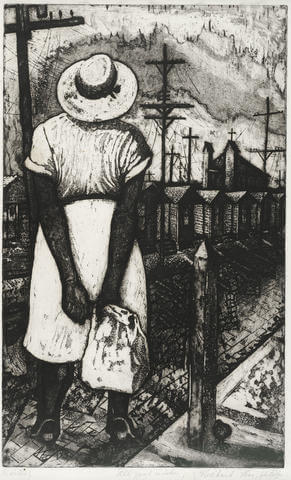Empowered Realities
Empowered Realities
Throughout the 20th century, African American artists understood their role as cultural workers and agents of social change. Employing expressionistic graphics and printing techniques, they emphasized the ideas of empowerment in their visual imaginary to uplift the poor and working-class people, challenging the mis-en-scene of segregated spaces.
Poverty, racial terrorism, legal injustices, lynching, women presence, and police brutality became elements of their visual narratives, along with patterns, colors, enlarged bodies, and rural and segregated neighborhoods. Linoleum cuts, lithographic, and wood block techniques facilitated the massive edition of prints, as art became an avenue for expressing social realities and making culture more accessible to communities.
Empowerment must be interpreted as the subjective emotions generated by the awareness of the possibility to utilize one’s own Black potentiality.
Artists Included:
James L. Wells, American, 1902 – 1993
Elizabeth Catlett, American, 1915 – 2012
Reginald Gammon, American, b. 1921
Ron Adams, American, born 1934
Elizabeth Catlett, American, 1915 – 2012
Aaron Douglas, American, 1899 – 1979
Joseph Holston, American, born 1944
John Biggers, American, 1924 – 2001
Allan Rohan Crite, American, 1910 – 2007
Herbert Gentry, American, 1919 – 2003
Frederick D. Jones, American, 1913 – 1996
Dox Thrash, American, 1893 – 1965
Hale A. Woodruff, American, 1900 – 1980
Kerry James Marshall, American, born 1955
Ernie Barnes, American, 1938 – 2009
Charles White, American, 1918 - 1979



